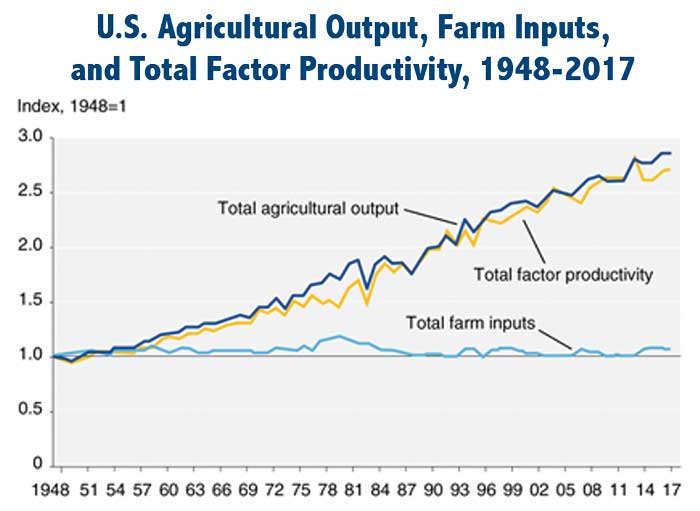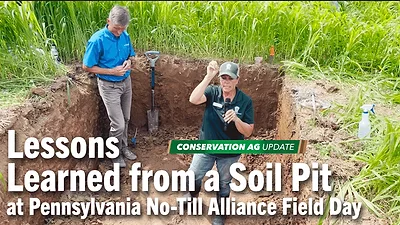People have used the term “sustainable farming” since the mid-1970s; however, there is no social or technical consensus on what the term actually means. Those who use it are typically highly critical of conventional commercial farming because they believe it’s too large scale, too industrial and too harmful to the environment. Simply put, they would like to turn back the clock to the early days of pre-industrial-scale farming.
My research has shown, however, that today’s farming methods are more sustainable than many people think. I published a book last year titled “Resetting the Table: Straight Talk About the Food We Grow and Eat.” It’s an attempt to provide important information about farming to those who don’t normally learn about agriculture firsthand — people who only learn about it from environmental advocates and critics.
The Way It Used to Be
My dad grew up on a farm in Lake County, Ind., in the 1920s. The farm was small — about 160 acres — and produced wheat, corn, soybeans, potatoes and a variety of other crops.
Farmers in that era ran fully diversified operations, didn’t burn fossil fuels and used wood to steam-up engines. They didn’t purchase any fertilizers but instead recycled animal manure. By today’s popular conceptions of “sustainable” farming, my parents’ generation of farmers met the mark.
However, as nature-friendly as these operations appeared to be, they lacked significantly in efficiency — forcing farmers to work harder for less profit compared to today’s operations.

STRAIGHT TALK. Though our nation’s agricultural inputs have remained consistent since the late 1940s, the total output and farm factor productivity steadily increased. Source: USDA, Economic Research Service, Agricultural Productivity in the U.S. data product. Data as of January 2020.
The Way It Is Now
Environmentalists claim today’s methods are non-sustainable. Scientists believe modern farming is damaging the soil, the water and even the climate on an unprecedented scale. However, when you look at data from the 1950s and 1960s and compare it to today, the picture is very different.
In January 2020, the USDA released data documenting the nation’s agricultural outputs, inputs and total farm factor productivity. The research shows a steady increase in total agricultural output from 1948 to 2017, with no increase in farm inputs over the same period.
Since 1940, corn production in the U.S. has increased five-fold, while land use for corn has declined by 20%. Additionally, there has been a decline in soil erosion, which is the result of strip-till, reduced-till and no-till methods. This is all a strong sustainability trend for corn, and the data is quite similar for cotton, potatoes, rice, soybeans and wheat. We’re going in the right direction.
The U.S. vs. the World
We’ve forged advancements that are paving a sustainable path, now and for the future. We’re finding out what works and what doesn’t and applying those data-driven findings to our operations. For instance, regenerative agriculture has proved valuable. Other practices like organic methods are, frankly, unhelpful to sustainable farming. Organic practices require the elimination of all synthetic chemicals and rule out GMOs. This makes it more difficult to reduce or eliminate tillage.
Globally, we have to worry about farming in African countries, where growers are stuck using unimproved practices. They’re all organic because they can’t afford fertilizer. They also don’t have diesel fuel, electricity or irrigation, and they only use heirloom seeds. Unfortunately, most of these farmers are also poverty-stricken and malnourished, and their children’s growth has been stunted. They won’t get the production they need to thrive until they embrace a science-forward, eco-modern approach.
The U.S. is making large but still largely unrecognized gains in sustainable farming, using applications of modern science to reduce input requirements for each bushel of production. Today’s strip-till farmers are on the cutting edge of the progress.






